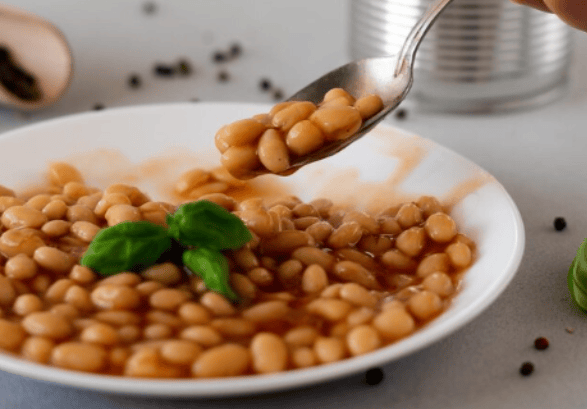We all know that protein is essential—it builds muscle, keeps you full, supports metabolism, and plays a big role in overall health. But if you’re on a tight grocery budget, eating enough protein might seem out of reach.
The good news? It doesn’t have to be.
While premium cuts of steak or protein powders can get pricey, there are plenty of affordable protein sources that are just as effective—and surprisingly easy to find at any grocery store. Whether you’re trying to fuel your workouts, lose weight, or simply eat better, protein-rich meals are totally doable on a budget.
This guide highlights 7 cheap protein foods that are healthy, versatile, and wallet-friendly. From pantry staples to overlooked gems in the produce aisle, you’ll find smart ways to stretch your dollar without sacrificing nutrition.
Ready to stock your kitchen without overspending? Let’s dive into the most practical and protein-packed foods that support your goals—and your bank account.
Why Protein Matters for Health and Fitness
Whether you’re hitting the gym or just trying to stay energized throughout the day, protein plays a major role in keeping your body strong and balanced. It’s not just for athletes or bodybuilders—everyone needs enough protein to function well.
One of the key protein benefits is its role in building and repairing muscle tissue. After any kind of physical activity—or even day-to-day movement—your muscles rely on protein to recover and grow. Even if you’re not super active, your body still uses protein to maintain lean muscle mass.
Protein also helps with weight loss and appetite control. It’s more filling than carbs or fat, which means meals with enough protein can help you feel satisfied longer and reduce unnecessary snacking.
Another reason to prioritize protein? It supports blood sugar balance and hormone regulation. Including protein with your meals can help slow down the absorption of sugar into your bloodstream, keeping energy levels more stable and cravings in check.
So, why eat protein every day? Because it fuels your body, supports your metabolism, and helps you feel your best—whether you’re chasing fitness goals or simply trying to eat healthier.
7 Best Affordable Protein Sources
You don’t need expensive steaks or fancy powders to meet your protein needs. These protein-rich foods are cheap, easy to find, and versatile enough for any meal plan. Let’s break down the best protein on a budget—including why each one deserves a place in your kitchen.
1. Eggs
- Protein: ~6 grams per egg
- Cost: Low (especially by the dozen)
- Perks: Eggs are one of the most complete protein sources available, meaning they contain all 9 essential amino acids.
- Tips: Scramble, boil, or bake them. Add to salads, sandwiches, or grain bowls for an instant protein boost.
2. Canned Tuna or Salmon
- Protein: 20–25 grams per 3 oz serving
- Cost: Very budget-friendly, especially store-brand or bulk options
- Perks: Long shelf life, high in omega-3 fatty acids, and excellent for quick meals.
- Tips: Mix with a little Greek yogurt or olive oil for a healthy tuna salad. Serve on whole-grain toast, in lettuce wraps, or over greens.
3. Dry or Canned Beans
- Protein: ~7–9 grams per ½ cup
- Cost: Extremely low—especially dried beans bought in bulk
- Perks: Beans offer a plant-based combo of protein and fiber, helping you stay full longer. They also support gut health and blood sugar balance.
- Tips: Use canned beans for convenience, or soak dried beans overnight for big-batch cooking. Great in soups, burritos, salads, and curries.
4. Peanut Butter
- Protein: ~7–8 grams per 2 tbsp
- Cost: Low; jars last for multiple servings
- Perks: Inexpensive and very filling, thanks to its healthy fat and protein content. A pantry staple that goes a long way.
- Tips: Stick with natural or no-sugar-added varieties. Spread on whole-grain toast, mix into oatmeal, or blend into smoothies.
5. Greek Yogurt
- Protein: 15–20 grams per 6 oz serving (plain, nonfat or low-fat)
- Cost: Moderate, but high in value per gram of protein
- Perks: Packed with protein and probiotics that support digestion, immune health, and satiety.
- Tips: Choose plain versions to avoid added sugars. Add fruit, cinnamon, or honey for flavor, or use as a creamy base in sauces and dips.
6. Lentils
- Protein: ~18 grams per cooked cup
- Cost: Dirt cheap when bought dry and cooked in bulk
- Perks: Loaded with iron, fiber, and plant-based protein, lentils are a nutrient-dense, budget-friendly powerhouse.
- Tips: Simmer into soups or stews, make lentil tacos, or mix with rice and veggies for a hearty meal.
7. Tofu or Tempeh

- Protein: 10–15 grams per 3 oz serving
- Cost: Very affordable, especially when bought in bulk
- Perks: Plant-based and protein-rich, tofu and tempeh are also rich in calcium, iron, and magnesium. Great meat substitutes for a vegetarian or vegan diet.
- Tips: Tofu absorbs flavors well—marinate, bake, or stir-fry it. Tempeh has a firmer texture and works well grilled, crumbled into sauces, or pan-fried.
These affordable protein sources prove that eating high-protein doesn’t have to mean high-cost. Whether you’re a student, feeding a family, or just want to cut back on grocery bills, these foods make it easy to stay nourished without overspending.
How to Incorporate These into Your Meals
Now that you’ve got a solid list of budget-friendly protein options, how do you turn them into meals that are cheap, filling, and tasty?
Start with easy, low-cost protein meals like:
- Tuna salad with canned tuna, Greek yogurt, and chopped veggies—great in wraps or on toast.
- Lentil soup made with dried lentils, carrots, onions, and garlic—hearty and perfect for batch cooking.
- Egg fried rice using leftover rice, scrambled eggs, and frozen veggies for a quick, protein-rich dinner.
- Tofu stir-fry with soy sauce, garlic, and whatever vegetables are in your fridge.
Meal prepping in batches can save time and money. Cook a big pot of beans, lentils, or hard-boiled eggs and portion them out for the week. Freeze extras to cut down on food waste.
You can also save more by buying in bulk or stocking up when your favorite protein foods go on sale. Store dry goods like beans, lentils, and rice in airtight containers to keep them fresh longer.
Mix and match these ingredients in bowls, salads, wraps, or soups to keep meals interesting without spending a fortune. With a little planning, high-protein eating on a budget is totally doable—and delicious.
Bonus Tips to Save Money While Eating High Protein
Trying to stretch your food budget while keeping your meals protein-packed? These cheap high protein tips can help you get the most bang for your buck.
Start by comparing prices per gram of protein, not just per package. For example, eggs and dried lentils offer a better cost-to-protein ratio than pre-cooked meats or packaged snacks.
Buy store-brand versions of staples like peanut butter, Greek yogurt, or canned tuna—they’re often just as nutritious for less money. Keep an eye out for coupons, loyalty app deals, or bulk sales, especially on long-lasting items like dry beans or frozen seafood.
When possible, buy dried beans and lentils instead of canned. They take more prep time but cost far less and last longer. Also, freeze leftovers or extra portions of cooked proteins to avoid waste and always have a backup ready.
And unless you have special dietary needs, skip pricey protein bars and powders. Whole foods are cheaper, more satisfying, and usually more nutritious.
With a few smart swaps and a little planning, you can save money on protein while still fueling your body right.
FAQs: Protein on a Budget
What’s the cheapest source of complete protein?
Eggs are one of the most affordable complete protein sources. They contain all nine essential amino acids and cost just a few cents per egg, making them a go-to for budget-friendly meals.
Can I get enough protein without meat?
Absolutely. Beans, lentils, tofu, tempeh, and peanut butter can all help you meet your protein needs—especially when combined across meals. You may need slightly more variety to get all essential amino acids, but it’s 100% doable with affordable protein options.
Are protein powders worth it on a budget?
They can be, but they’re not necessary for most people. If you’re struggling to meet your needs due to a busy schedule or specific fitness goals, a basic, no-frills protein powder might be useful. Otherwise, whole food sources are more cost-effective and often more filling.
What’s better: plant or animal protein for cheap?
Both can work. Animal proteins like eggs, canned tuna, and yogurt offer complete protein in fewer servings. But plant proteins like lentils and beans are incredibly cheap and offer fiber and other nutrients. A mix of both gives you more flexibility and savings.
Final Thoughts: High Protein, Low Cost
Eating well doesn’t have to mean spending more. With the right approach, you can enjoy all the benefits of a high-protein diet without stretching your wallet. The affordable protein sources we’ve covered—like eggs, beans, tuna, yogurt, and lentils—prove that healthy eating is totally within reach.
Each of these options offers a strong balance of nutrition, convenience, and value. Whether you’re cooking for one or feeding a family, they’re easy to mix and match for endless, budget-friendly meals.
So if you’re trying to build muscle, stay full longer, or simply eat smarter, these are truly some of the best protein on a budget choices out there. With a little planning and creativity, you can eat high-protein, feel great, and save money—one meal at a time.
